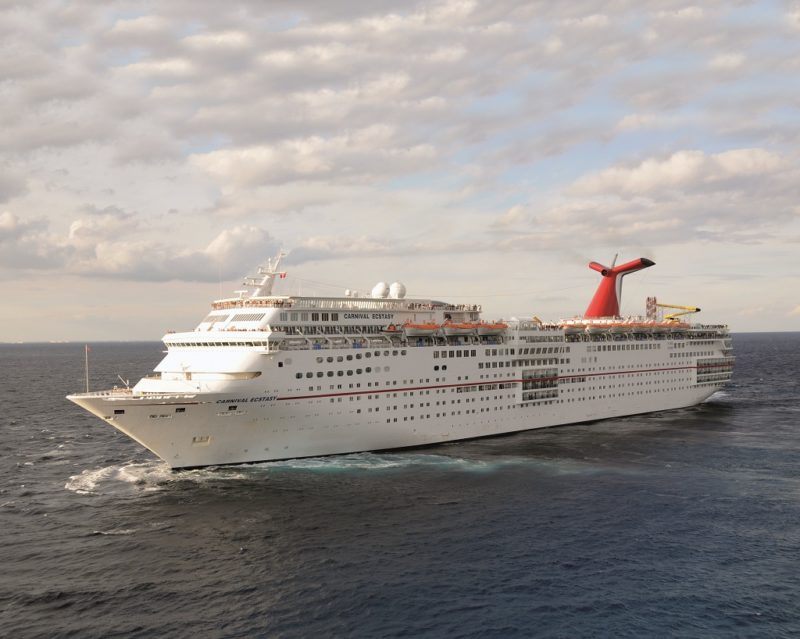
The name of the island of Cozumel is derived from the Mayan word ‘Cuzamil’, which means the ‘Island of Swallows’ (In Spanish the Isla de los Golondrinas). The island is located in the Western Caribbean along the eastern side of the Yucatan Peninsula around 51 miles south of Cancun on the mainland and 12 miles from Playa del Carmen, the nearest resort on the mainland. The island is 30 miles long and 9.9 miles wide with a total area of 184.542 square miles and is the largest permanently inhabited Mexican island, and the third largest Mexican island, following Tiburon Island in Baja California, and Isla Angel de la Garda (Angel Guardian Island), also in Baja California.
Cozumel is separated from the mainland by the Cozumel Channel and is close to the Yucatan Channel. The town of San Miguel de Cozumel is on the north western side of the island, with three cruise ship terminals and a population that has grown rapidly in the last ten years from 77,000 in 2010 to 100,000 in 2020, largely on the back of the multi – billion American dollar cruise ship industry. The island is located at 20° 25′ North, 86° 55′ West, with plenty of recreation activities for the tourist including snorkelling, scuba diving, swimming with dolphins, fishing, golf, canoeing, kayaking, zip lines, walking, riding, rapelling (artificial rock face climbing), kite surfacing and wind surfacing. Those that like sunbathing on pristine white beaches with a backdrop of large and small Mayan temples are well catered for.
Cozumel is a flat, sandy island with the highest point being only 13 metres above the sand and limestone ledges of sea level, and has the Parque Nacional Arrecifes de Cozumel, the Manglares y Humedades del Norte del Isla Cozumel (Ramsar Wetland in the north of the island), the San Gervasio archaeological temple (Mayan), and an extensive Mesoamerican Reef System off the pristine white beaches with coral underwater gardens, home to a rich and varied marine fauna and flora. Cozumel is part of the north eastern State of Quintana Roo (Latin American Spanish translation of ‘Red Country State’).
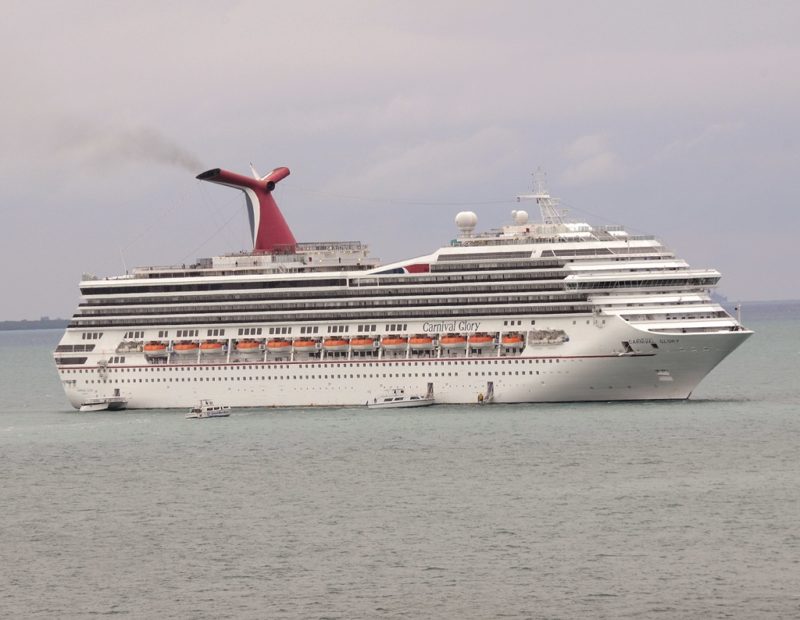
HISTORY OF COZUMEL
The Mayan culture and people of Cozumel were originally established in Guatemala fifteen centuries before Christ, and then gradually moved north into the Chiapas region of South Mexico, Honduras, Belize and the Yucatan peninsula. The classical Mayans in the south raised great temple cities such as Tikal, Copan, Quirigua, Palenque near present day Emiliano Zapata, and Piedras Negras.
Cozumel was occupied around 200 AD by Mayan people with many artefacts unearthed today from this period. The island was sacred to Ix Chel, the Mayan Moon Goddess, and the temples on the island were a place of pilgrimage, especially by women desiring fertility. There are a number of Mayan ruins on the island including the temple of San Gervasio located in the centre of the island.
In 435 AD, the great Mayan city of Chichen Itza was founded by seafaring navigators from Cozumel, and the Itza people from Campeche and the Tabasco region of the Gulf of Campeche. Day shore excursions from cruise ships moored at the three terminals at San Miguel de Cozumel and at Punta Langosta are available to see this, the largest and greatest of the Yucatan Mayan temples, of which only 50% to 60% has been properly explored and documented as the Mayans left no written word of their civilisations. This has required many decades of patient research by world scholars to unpick the meaning of their civilisations.
Chichen Itza covers a great length of five kilometres stretching from the south to the north, and taking in two separate building periods of Chichen Viejo (Old Chichen AD 600 to 900) and Chichen Nuevo (New Chichen AD 900 to 1200). Chichen Viejo was built on the grand scale with roads connecting the main areas of palaces where kings lived to all other temples. These buildings were two storeys in height with a patio gallery on the second level, the heavy stones and intricate carvings showed that the Mayans had mastered the engineering, architectural and load bearing skills. Chichen Nuevo includes the Temple of the Warriors, the Great Ball Court and a large Castle with a throne in the shape of jaguar adorned with gold and jadeite, where the ruler sat and surveyed his kingdom. The Mayan people are today viewed with an almost sacred awe or transcendent curiosity. However, there was nothing trivial or superficial about their great temples, which has taken some great measure of interpreting to uncover their secrets and thus interest modern day travellers.
A coalition in the 12th century by the four leading Mayan peoples of the Yucatan peninsula at Tulum, Uxmal, Mayapan and Chichen Itza, at first under the control of Chichen Itza, led to disagreements between its leaders and the Mayapan leaders took over. The elite of Chichen Itza was made up of warriors, priests and merchants, and they continued to worship their god Kukulcan and maintain the impressive temples and ‘talud’ style of architecture until it was eventually abandoned. Chichen Itza remained as a major religious site of pilgrimage for all Mayans until the 16th century. Francisco de Montejo, the Spanish conquistador leader and conqueror of the Yucatan, wanted to establish the capital of the province at Chichen Itza, but the idea gradually lost its appeal and the capital was never based here. The Itza people returned to live in rural peasant villages, and their great artistic and scientific achievements were forgotten. Modern day researchers little suspected that these tiny villages held the secrets to unlock the great achievements of Chichen Itza, as the secrets were handed down by word of mouth.
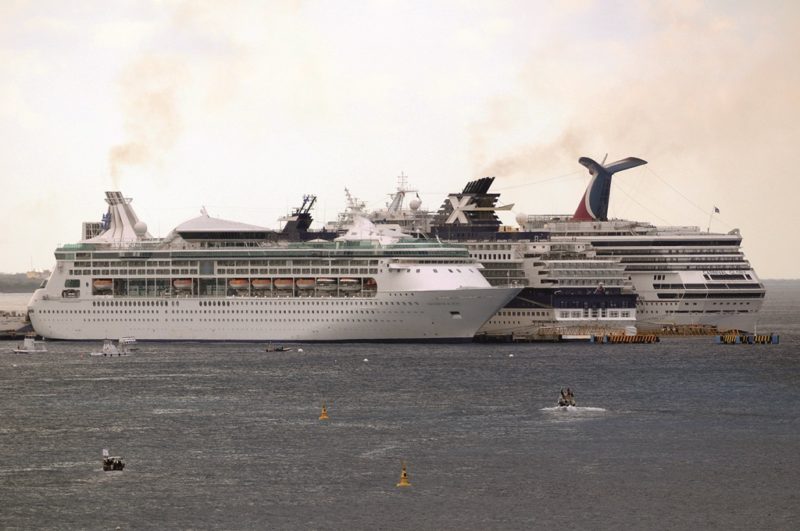
COZUMEL REEFS NATIONAL MARINE PARK
Many tourists and cruise ship passengers use the services of a professional ‘buceo’ or deep-sea diver to explore the beautiful, colourful world of a diverse ecosystem of coral reefs, home to more than one thousand marine species. The coral reefs off Cozumel are part of a much larger Mesoamerican Barrier Reef System of over 1,000 kilometres or 620 miles in length, which is the second largest reef system in the world after the Great Barrier Reef off Queensland in Australia. The deeper coral reefs of Cozumel were historically famed for their black corals, yet black coral populations had declined from the 1960s to the mid 1990s because of overharvesting, and did not recover. A huge portion of the reef off the south side of the island is sectioned off into the Arrecifes de Cozumel National Park. This park is protected under the Ramsar Convention against damage to the underwater marine habitat. It is completely forbidden to touch or remove any coral or creature that inhabits the reefs.
The average temperature of the island in June or July each year is 33.0 degrees Centigrade with a record high of 39.2 degrees Centigrade, a tad too hot for people from the higher latitudes of Northern Europe. The average winter temperature in December is a comfortable 23.4 degrees Centigrade, and favours many fauna including several birds e.g. Swallows, Emerald green finches, great curassows, thrashers, vireo and wren. Mammals include foxes, coati, racoon and three types of rodents of rat size, fish include the toadfish, as well as American crocodiles, black spiny-tailed iguana and large, blue land crabs. The only working pearl farm in the Caribbean is located on the north edge of the island. Desalination plants are essential to provide enough water from three sites for the thirsty tourists.
The first Spanish expedition to visit Cozumel was led by Juan de Grijalva, who landed on the island on 3rd May 1518. In the following year, Hernan Cortes stopped by the island on his way to Vera Cruz. The Grijalva and Cortes expeditions were received peacefully by the Mayans of Cozumel, unlike the experiences of other Spanish expeditions in other parts of Mexico. Cortes replaced many Mayan idols with images of the Virgin Mary, the islanders did not object and continued to supply Spanish expeditions with food, water and other supplies so that they could continue their voyages.
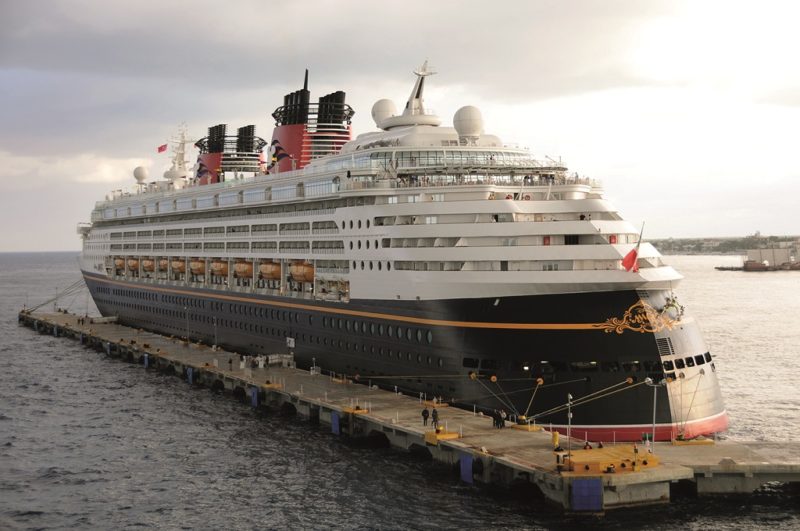
As many as 10,000 Mayans lived on the island during these first contacts with the Spanish, but the dreaded smallpox contagion arrived on the island in 1520 on the Panfilo Narvaez expedition, with only 385 people left alive fifty years later in 1570. In the ensuing years, Cozumel was often subjected to pirate attacks, including by the infamous Henry Morgan and Jean Lafitte, and in 1650 most of the islanders were forcibly relocated to the mainland town of Xcan Bolond for their safety from buccaneer attacks. The final remaining Mayan settlers on Cozumel were relocated in 1688 to villages along the Quintana Roo coastline.
In 1848, the island was repopulated with refugees escaping from the tumult of wars in the Yucatan peninsula, and a year later the town of San Miguel de Cozumel was founded and officially recognised by the Mexican Government. A small airport was built on the island in the 1930s, and was used by the Americans with their Catalina seaplanes to hunt down and destroy German U-boats operating in the Caribbean. A much larger international tourist airport was built in the 1970s.

THE DEVELOPMENT OF COZUMEL AS A CRUISE PORT
Small cruise ships began to call at the island of Cozumel in the mid 1960s, after Jacques Cousteau in his research vessel Calypso mentioned in a documentary that the island was the most beautiful in the world for snorkelling. The cruise ship Ariadne with accommodation for 239 passengers sailed from Miami on 3rd November 1967 to become the first cruise ship to call regularly on Cozumel. Carlos Namur Aguilar was the ship’s agent on the island, and he assisted with her first arrival on Sunday, 5th November 1967. She had been built as the steam powered Patricia of Swedish Lloyd by Swan, Hunter & Wigham Richardson Ltd. in 1951 for the Tilbury to Gothenburg service. She was sold to Hamburg America Line in 1957 and renamed Ariadne, and then in 1961 to the Eastern Steamship Line of Boston. She arrived on the island with a white hull, blue funnel with an ‘L’ between two thin white lines, the ‘L’ denoted W. R. Lovell, owner of the Winn-Dixie supermarket chain. The four day cruises also called at Haiti and Ocho Rios in Jamaica and cost $105, then she moved her base to Port Everglades and sailed to Cozumel three times per month for $120 on a seven day cruise. She was sold in 1972 to Chandris and ended her Cozumel career.
The twin funnelled engines aft Bolero of 10,568 grt was launched in June 1972 and completed in 1973 by the Dubigeon-Normandie S.A. yard at Prairie-au-Duc, Nantes for Fred. Olsen. She was chartered between 1973 and 1976 by Commodore Cruise Line for service between the East Coast U.S.A. to Bermuda, and from Miami to Cozumel. She dragged her anchors in March 1974 during a storm and went aground on the sandbanks north of Cozumel, her 354 passengers were airlifted to Miami. At the end of this charter, she began on 12th October 1976 an all year round service from North Shields to Kristiansand, Stavanger and Bergen.
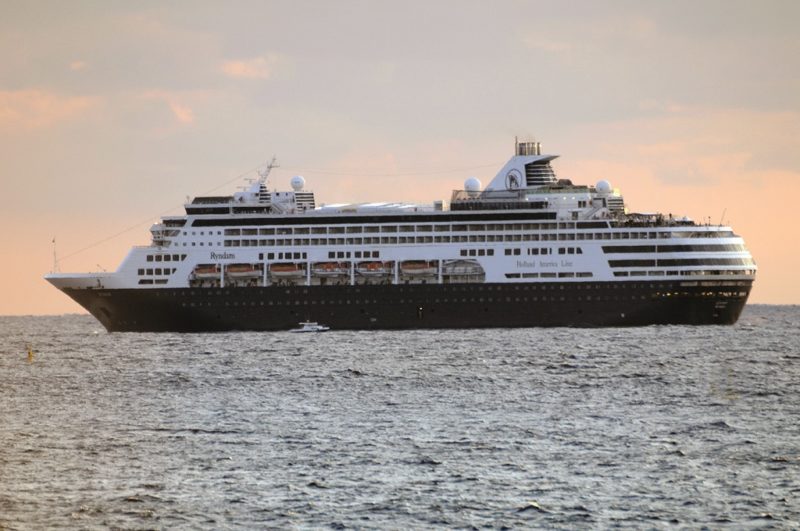
In 1977, the 464 passenger liner Odessa, built on the Tyne as Copenhagen in 1974 and towed to Barrow for fitting out and renamed Odessa, and the 300 passenger cruise ship Kazakhstan, built by Wartsila at Turku in 1975, both of the Black Sea Shipping Company of USSR, began cruising from New Orleans and Tampa to Cozumel. They were moored on opposite sides of the newly completed International Terminal at Cozumel. Odessa performed two cruise options:-
- ‘Mayan Explorer’ seven night service from New Orleans to Cozumel and Havana, at a cost of $475 to $995.
- ‘Balalaikas & Bongos’ seven night service from New Orleans to Cozumel, Grand Cayman and Havana at a cost of $475 to $995.
- Kazakhstan performed three cruise options:-
- ‘Caribbean Festival’ 14 night cruise from New Orleans to Cozumel, Grand Cayman, Montego Bay, Curacao, Port au Prince (Haiti), Santiago and Havana at a cost of £895 to $1,995.
- ‘Blue Horizon’ seven night cruise from New Orleans to Cozumel, Playa del Carmen, Grand Cayman and Havana at a cost of $450 to $995.
- ‘Venture Isles’ ten night cruise from Tampa to Havana, Cozumel, Playa del Carmen, Grand Cayman, Montego Bay and Port au Prince (Haiti) at a cost of $640 to $1,420.
By 1978, Cozumel and the International Terminal had established itself as an important cruise ship destination with six regular cruise ships calling throughout that year. These were as follows:-
- World Renaissance with accommodation for 529 passengers on ten and eleven night cruises from Miami to Port au Prince (Haiti), Port Antonio, Cartagena, Panama, San Andres and Cozumel at a cost of $995 to $1,765. She had been built as Renaissance in 1966 by Chantiers de l’Atlantique for a subsidiary of Paquet Cruises and ran on a Marseille to Haifa ferry service as well as on Eastern Mediterranean cruises. She was renamed World Renaissance in 1978 for her Western Caribbean cruises, and later was chartered to Costa Line for West Coast USA cruising from Los Angeles to Catalina Island, San Diego, and Ensenada in Mexico.
- Southward, twin funnelled and the fourth cruise ship built in 1971 for NCL by the Riva Trigoso yard in Italy. She cruised in 1978 from Miami to Cozumel, Grand Cayman, Ocho Rios and the Bahamas at a cost of $530 to $1,170. She continued to cruise to Cozumel until 1987 when she was replaced on the Cozumel cruise circuit by one of the greatest liners ever built, the elegant, twin funnelled Norway of NCL, and formerly France of French Line when built in 1961. I always vividly remember her arrivals at Southampton Water, with her engine smoke exhausting horizontally through twin fins. Two of her four boilers had been removed for cruising for economy reasons, and she carried only 700 passengers on her seven night cruises from Miami to Cozumel, Grand Cayman, Roatan and Great Stirrup Cay, the NCL private island.
- Vistafjord of Norwegian Amerika Line (NAL) and completed in 1973 by Swan Hunter Shipbuilders as the last liner built on the Tyne. She was assigned to NCL for cruising from New York to the Bahamas, and also went cruising from Port Everglades to Montego Bay, Port au Prince (Haiti), Grand Cayman, Cozumel, Playa del Carmen on six night and seven night cruises at a cost of $640 to $1,270. She also made 18 night cruises from Port Everglades to Cozumel, Playa del Carmen, Grand Cayman, Montego Bay, Cristobal, San Blas Islands, Curacao, Bonaire, St. Lucia and St. Thomas for $1,570 to $3,150. Vistafjord and her earlier near sister Sagafjord, dating from 1964 when built by the La Seyne yard, were both sold to Cunard Line in 1983.
- Mermoz built in 1958 as Jean Mermoz for Compagnie Fraissinet of Marseille on her regular liner service to French West Africa. She was sold in 1965 to Nouvelle Compagnie des Paquebots with her name unchanged, and as Mermoz in 1978 she carried 500 passengers on the Cozumel and Western Caribbean cruise circuit from American ports.
- Stella Solaris built as Cambodge at Dunkirk in 1958 for Messageries Maritimes of France. She was purchased in 1970 by Sun Lines of Greece and converted to a cruise ship with accommodation for 765 passengers. She made a 14 night Christmas 1978 cruise from Galveston calling at Montego Bay, San Juan, St. Thomas, Cartagena, Cristobal, Balboa, San Andres, Grand Cayman and Cozumel at a cost of $1,830 to $3,375. She followed this with a January 1979 Cruise of 12 nights from Galveston calling at Grand Cayman, Cartagena, Cristobal, Balboa, San Andres and Cozumel at a cost of $1,960 to $2,695.
- Universe built as the standard C4-S-1a cargo-liner Badger Mariner by the Sun yard at Chester, Pennsylvania in 1953, and after three changes of name she became Universe from 1976 to 1996. She normally made 22 day cruises from Port Everglades to Los Angeles calling at Cozumel, Puerto Barrios, Puerto Limon, Cartagena, the San Blas Islands, Balboa, Panama Canal, Acajutla, Acapulco and Puerto Vallarta, her last three ports also being in Mexico, at a cost of $1,795 to $3,195.

In 1985, there were twenty cruise lines offering cruises to 38 different Eastern Caribbean and Western Caribbean ports, including Cozumel. Several of these cruise lines are still in business today, including:-
- Carnival Cruise Line in 1985 with seven day cruises from Miami on Carnivale (ex Empress of Britain), Festivale (ex S. A. Vaal), Holiday and Mardi Gras (ex Empress of Canada). By 1996, this fleet had increased to seven cruise ships in Fantasy, Ecstasy, Sensation, Fascination, Imagination, Inspiration and Carnival Destiny. Today, a huge fleet of thirty cruise ships are employed, all with a prefix of ‘Carnival’ except one in Mardi Gras (2), with this big fleet making a huge total of 440 calls per year at Cozumel.
- Chandris/Celebrity Cruises in 1985 with Victoria (ex Dunnottar Castle) on seven day cruises from San Juan, increasing by 1996 to Meridian (ex Galileo Galilei), Century, Galaxy, Mercury, Britanis (laid up at Tampa after a fire), Horizon, Zenith and Amerikanis (ex Kenya Castle). Today, a fleet of fifteen cruise ships mostly with names with a ‘Celebrity’ prefix, but all with the famous Chandris ‘X’ on their funnels.
- Costa Cruises in 1985 with seven day cruises from San Juan on Cala Costa, and seven day cruises from Port Everglades on Costa Riviera and Daphne in 1985. By 1996, the fleet had increased to ten cruise ships in Costa Allegra, Costa Marina, Eugenio Costa, Daphne, Danae, Enrico Costa, Costa Riviera, Costa Classica, Costa Romantica and Costa Victoria. Today, a large fleet of eighteen cruise ships operate in the Caribbean, including to Cozumel, and world-wide.
- Cunard Line in 1985 offered seven and fourteen day Caribbean cruises from San Juan on Cunard Countess, and fourteen day cruises from Port Everglades on Vistafjord and Sagafjord. By 1996, the cruise fleet included Crown Monarch (chartered), Crown Jewel (chartered), Crown Dynasty (chartered), Royal Viking Sun, Vistafjord and Queen Elizabeth 2. Today, the Cunard fleet cruises with Queen Elizabeth, Queen Victoria, Queen Mary 2.
- Hapag-Lloyd Cruises in 1985 cruised the Caribbean from Barbados on long cruises with Europa, built in 1981, increasing by 1997 to Europa, Bremen (ex Frontier Spirit) expedition ship, Hanseatic expedition ship, and Columbus C. The expedition ships were operated jointly with Hanseatic Tours. Today, the Hapag-Lloyd fleet consists of a new Europa built in 1999, and the newer Europa 2 built in 2013 in addition to three new expedition ships, Hanseatic Inspiration, Hanseatic Nature and Hanseatic Spirit.
- Holland America Line in 1985 cruised the Caribbean with seven day cruises on Nieuw Amsterdam from Tampa, and seven day cruises from Port Everglades on Rotterdam, increasing in 1996 with sisters Maasdam, Ryndam, Statendam and Veendam. Today, a much larger fleet of fourteen cruise ships are operated.
- Norwegian Caribbean Line (NCL) in 1985 were operating seven day Caribbean cruises on five ships from Miami in Skyward, Southward, Starward, Sunward II and Norway. By 1996, a newer fleet of cruise ships named Seaward, Windward, Dreamward, Leeward, Norwegian Crown and Norway were offered, and today a much larger fleet of eighteen cruise ships are offered.
- P.& O. Cruises in 1985 were operating Canberra on very long world-wide cruises, and in 1996 offered Canberra, Victoria and Oriana. Today, a larger fleet of ‘megacruise’ ships are offered in Ventura, Iona, Britannia, Aurora, Arcadia, Arvia, Azura, and Oceana.
- Princess Cruises in 1985 were operating seven day and fourteen day cruises from San Juan with Sun Princess, Pacific Princess and Royal Princess, all three switching to Pacific cruising from San Diego and Acapulco in the off season. By 1996, a six ship fleet was being offered in Sky Princess, Star Princess, Crown Princess, Regal Princess, Sun Princess, Dawn Princess, and today a much larger fleet of eighteen cruises ships is offered, all with names with a suffix of ‘Princess’.
- Royal Caribbean Cruise Line (RCCL) in 1985 were offering seven day and fourteen day cruises from Miami on Nordic Prince, Song of America, Song of Norway, Nordic Empress and Sun Viking. This fleet had increased to seven ships in 1996 with Nordic Empress, Song of America, Sovereign of the Seas, Monarch of the Seas, Majesty of the Seas, Legend of the Seas and Splendour of the Seas. Today, a much larger fleet of 26 ‘megacruise’ ships are offered, with no fewer than 236 arrivals per year at Cozumel by Royal Caribbean International (RCI).
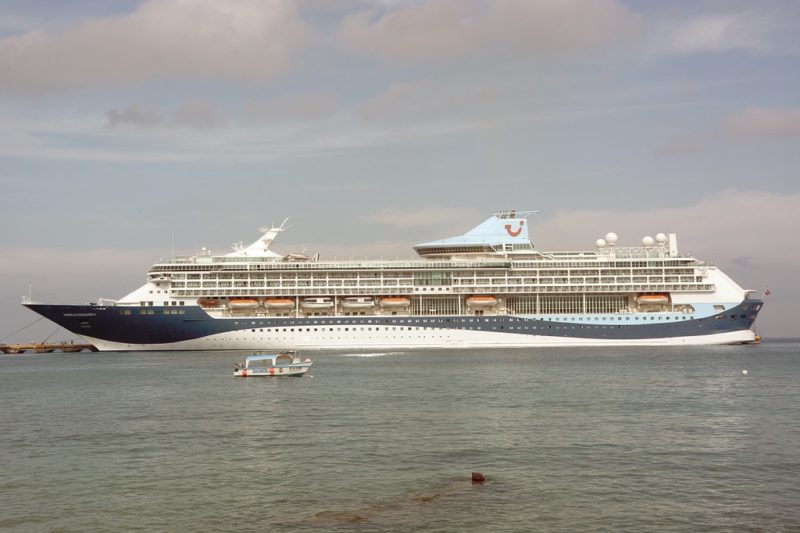
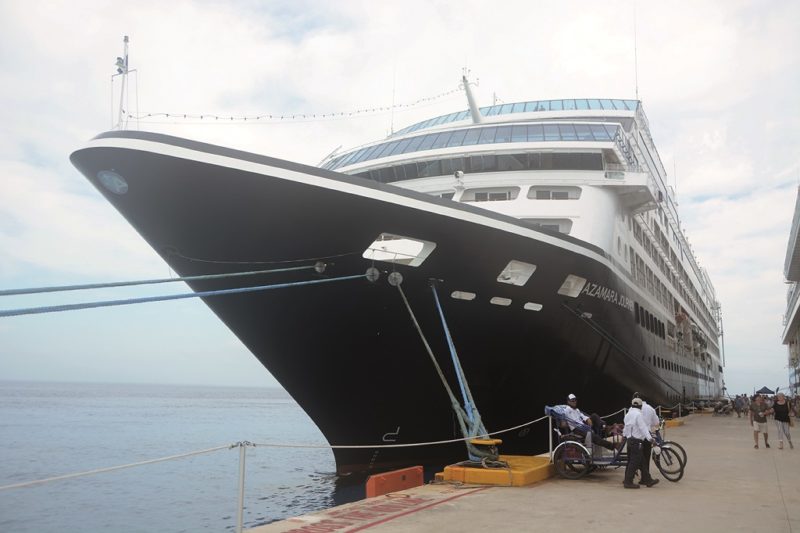
Today, the Port of Cozumel can handle seven or eight ‘megacruise’ ships on the same day carrying up to six thousand passengers each at three large terminals, with the seventh and eighth ships lying off the coast and passengers tendered ashore. However, the Mexican Government has been careful to safeguard the tropical forests, mangroves, pristine white beaches, coral reefs, and the wildlife with less than 30% of the island developed for cruise passenger benefit. Cozumel has been developed as a world class tourist haven for diving and many local ‘buceo’ or deep sea divers earn very high remuneration from tourists, as well as fishing and water sports. These are based in San Miguel de Cozumel village near three large cruise terminals, as follows:-
- Punta Langosta Terminal near the south end of San Miguel de Cozumel village with one pier for two ‘megacruise’ ships. NCL, Disney Line, Oceania Cruises, Regent Seven Seas Cruises, Silversea Cruises. Seabourn Cruises etc berth here, and also Carnival Cruise Line ships on the busy days of overflow from Puerta Maya Terminal.
- International Terminal was the first terminal at Cozumel when built in the early 1970s three miles to the south of Punta Langosta, it also has one main pier for two ‘megacruise’ ships and a smaller pier for tenders. All Royal Caribbean International (RCI) and Celebrity Cruises ships berth here.
- Puerta Maya Terminal has two piers suitable for three ‘megacruise’ ships and is the largest of the three terminals. All Carnival Cruise Line, Costa and other subsidiaries cruise ships berth here. The land entrances of both the International Terminal and the Puerta Maya Terminal are very close to each other and less than 500 metres apart. The Administracion Portugaria Integral de Quintana Roo (Apiqroo), operators of the port, have adopted certain non – guaranteed and non – immutable methods as to where each cruise ship will be berthed on a particular day, but these are subject to change at any time without prior notice to cruise ship operators or passengers. This is essential because of the fact that one thousand cruise ships call every year at Cozumel.
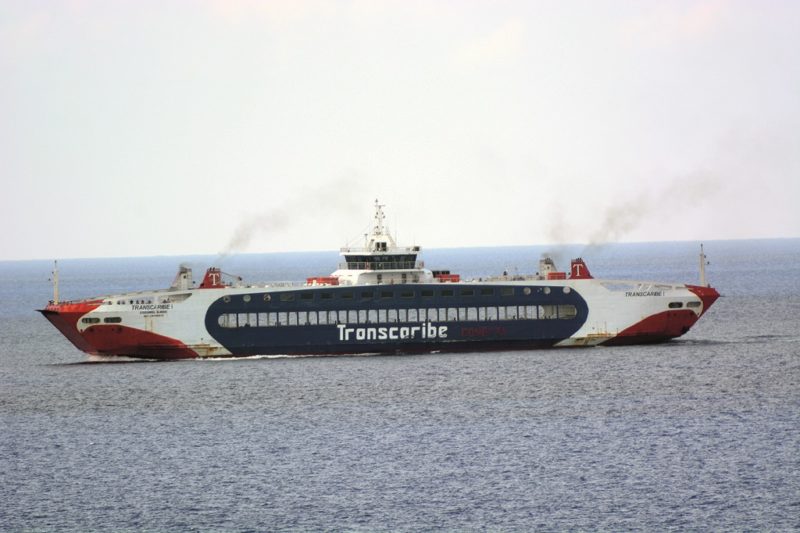
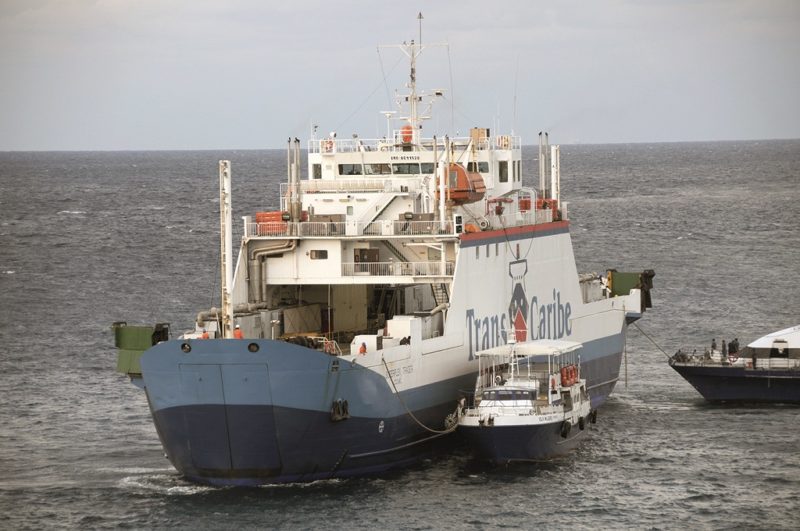
The Port of Cozumel has a Marine Coastal Tower operated by the Harbour Master and his staff with communication to incoming cruise ships on Channel 16 VHF Radio. The approach by cruise ships is easy on a heading of 177 degrees (True), which is the alignment of all three piers. The ship is in very deep water of over 200 feet in depth until approaching the outer dolphin, when the depth suddenly drops off to 65 feet, and then to 36 feet (Mean Low Water) alongside the piers. The manoeuvring and docking areas are 500 feet parallel to all three piers on the east side, and 1,000 feet parallel to the piers on the west side. There are no tugs available at Cozumel for the berthing of cruise ships. Potable water is available to all three piers, but not fuel oil delivery. Port movements can be made during the hours of darkness, but always with the assistance of a trained pilot.
During 2022, there were fourteen days when seven ships arrived on the same day, and two days when eight ships arrived on the same day.
Thus, depending on the length of all of the ships arriving, there were several days when passengers were tendered ashore from some distance, and with the cruise ship not allowed to anchor in case of damage to the precious coral reef systems. Port agencies such as Aconsur S. A. help out when these ‘megacruise’ ships with over six thousand passengers onboard have to organise a tender rota.
Royal Caribbean International (RCI) has seven vessels with a passenger total of over 6,000 in Allure of the Seas, Oasis of the Seas, Harmony of the Seas, Symphony of the Seas, Icon of the Seas, Wonder of the Seas and Utopia of the Seas, while Carnival Cruise Line has three in Carnival Celebration, Carnival Jubilee and Mardi Gras, and MSC Cruises also has three with this capacity in MSC Grandiosa, MSC Virtuosa and MSC World Europa.
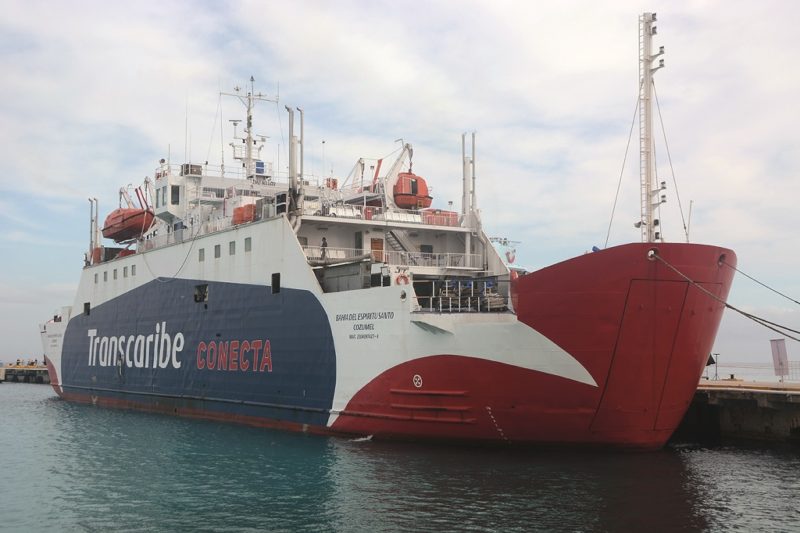
The total number of passengers arriving at the three terminals on Cozumel Island during 2022 was 2.617 million on 1,038 cruise ships. The arrivals over the last ten years, and by cruise ship line in 2022 were as follows:-
TEN YEAR PASSENGER ARRIVAL STATISTICS
Year Ships Passengers
2012 909 2.745 Million
2013 894 2.751 million
2014 1,110 3.406 Million

2015 1,080 3.398 Million
2016 1,116 3.637 Million
2017 1,248 4.104 Million
2018 1,296 4.266 Million
2019 1,369 4.570 Million
2020 374 1.130 Million
2021 353 0.650 Million
CRUISE SHIP TOTAL at COZUMEL in 2022
Carnival Cruises – 440
Royal Caribbean International – 236
Norwegian Cruise Line – 74
Celebrity Cruises – 68
Disney Cruise Line – 62
MSC Cruises – 55
Princess Cruises – 21
Virgin Voyages – 15
Viking Ocean Cruises – 10
Aida Cruises – 7
Regent Seven Seas Cruises – 7
Marella Cruises – 7
Seabourn Cruises – 6
Mystic Cruises – 6
Holland America Line – 6
Oceania Cruises – 5
TUI Cruises – 4
Silversea Cruises – 3
Le Ponant Cruises – 2
Crystal Cruises – 1
Windstar Cruises – 1
Club Med – 1
P. & O. Cruises – 1
GRAND TOTAL 1,038
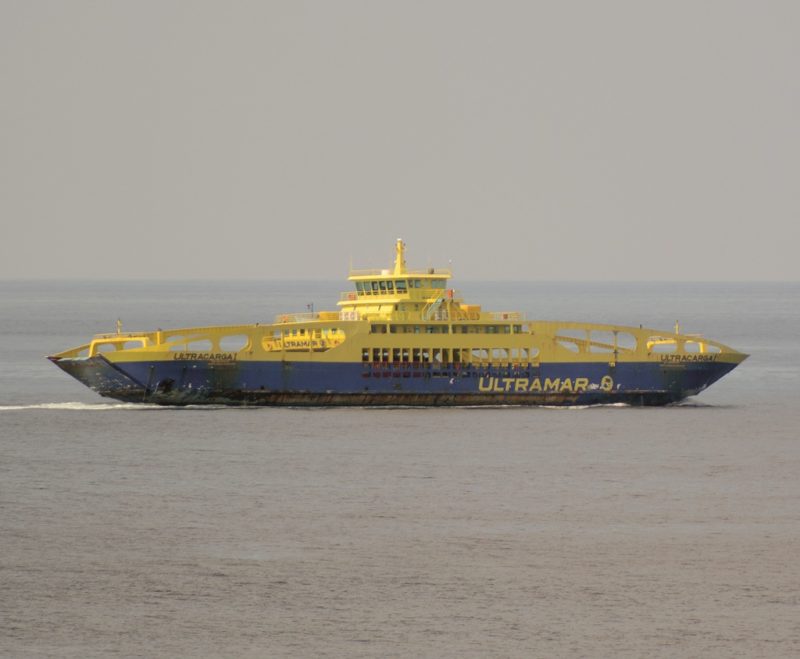
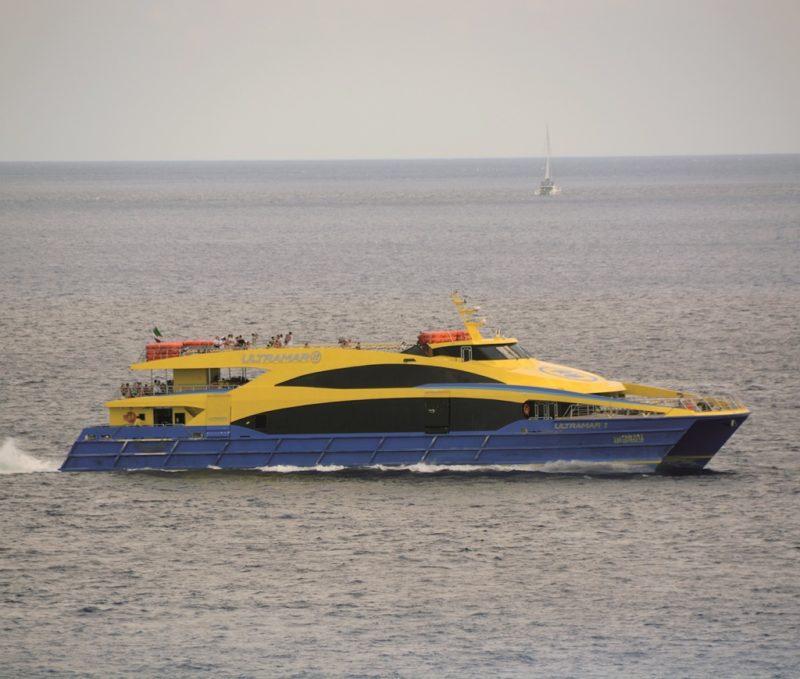
COZUMEL PORT OPERATORS
The Administracion Portuaria Integral de Quintana Roo S.A. (Apiqroo) was constituted on 17th March 1994 before a Public Notary, Fernando A. Cuevas Perez, as a public State owned company. The Government of the Free and Sovereign State of Quintana Roo, and the minority partners of the municipalities of Cozumel, Isla Mujeres, Benito Juarez, Soladaridad and Othon Blanco, with a good website at www.apiqroo.com.mx. The port mission was to offer services as well as competitive and sustainable port facilities in the Greater Caribbean, and to be a leader in the Americas in cruise ship reception and nautical tourism management, and to satisfy the cargo handling services, security and sustainability of six mainland port facilities, as well as the Port of Cozumel.
These six mainland ports are as follows:-
- Playa del Carmen is directly opposite the Port of Cozumel on the mainland, and thus embarks passengers travelling to Cozumel, and receives returning passengers.
- Puerto Moreles is the main cargo port and is located around 36 kilometres south of Cancun, with an open harbour and two berths, one for handling small feeder container ships and offshore supply vessels, and the other for fishing trawlers. There is an industrial area, however tourism is the main activity. A barrier reef is just 500 metres off the beach, and thus diving, snorkelling and wind surfacing predominate. A crocodile sanctuary, and a Mayan jungle sanctuary and botanical garden are nearby. On – line billing is used for all containers handled (20,000 per year), harbour dues for trawlers, ships and private yachts.
- Puerto Juarez is located five kilometres north of Cancun, and is the main departure point for the many tourist passenger ferries for Isla Mujeres and nearby islands.
- Isla Mujeres was discovered by the Spanish conquistadors during an expedition by Francisco Hernandez de Cordoba in 1517. In Pre-Hispanic times, the island was sacred to Ix Chel, the Mayan goddess of the moon, love and fertility, which received offerings with female forms that believers deposited on its beaches. When the Spanish conquistadors arrived and observed these female figures, they named the island Isla Mujeres, Island of Women. The island has an area of 5,046 square metres and the port handles the large number of small ferries arriving with tourists and mainland residents for the pristine white beaches.
- Chetumal is the capital of the State of Quintana Roo and is located in the south of the State with a population of 212,500. The proximity to the nearby border with Belize makes it the main crossing point and trading point into Belize. The total land area of the port is 46,484 square metres.
- Bacalar is a dedicated tourist site that was developed between the lagoon in which it is located and the nearby Mayan archaeological sites and Chetumal City. The pristine white beaches are the main attraction, with meals served under palapas trees. The Blue Cenote located four kilometres to the south is famous for the clear transparency of its water down to 30 metres or more.
Ultramar Ferries is one of three operators of small ro-ro and passenger ferries connecting the ports in the area. It currently has a fleet of fourteen ships with passenger facilities with air conditioning, mounted television screens and rest rooms (toilets). The vessel passenger capacities vary from 800, 550, 450, 350, 250 and down to 150 passengers. The larger ro-ros are double ended ferries such as Ultracarga 1 of 984 grt, built in 2007 on dimensions of 93 metres by 18 metres, and Ultracarga IV of 1,551 grt, built in 2015 on dimensions of 102.2 metres by 18 metres, and have blue hulls with yellow topsides. The passenger only ferries have white or blue hulls with yellow topsides, and are powered by twin or quadruple engines to give service speeds of 25 knots. Ultramar Ferries operate on the San Miguel de Cozumel to Playa del Carmen route, a 40 minutes service, and from Cancun centre to Islas Mujeres, with a picking up point at the Hotel Zone in Cancun. Winjet jet propelled small ferries operate four times daily to San Miguel de Cozumel to Playa del Carmen and return. There is also a ferry service taking one hour 40 minutes from Punta Venado, to the south of Playa del Carmen, to Cozumel by Transbordadores del Caribe (Trans Caribe).

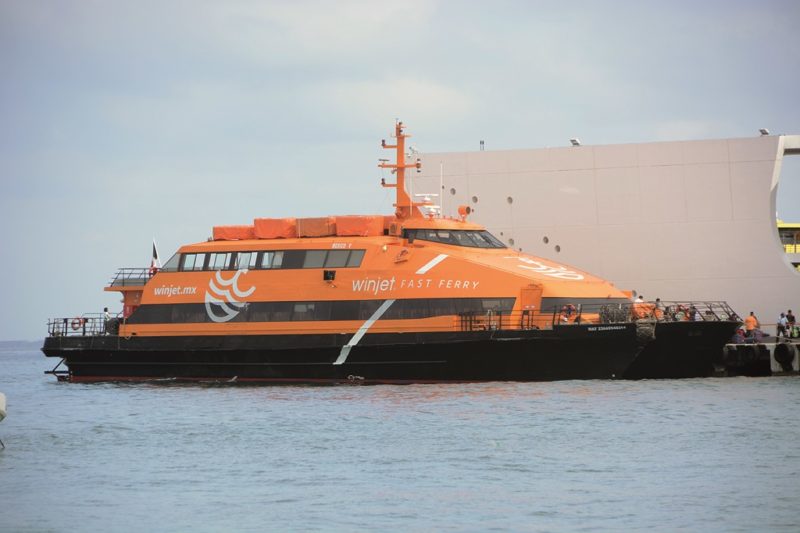
SUMMARY
The huge yearly cruise ship total of arrivals returned to over one thousand ships again in 2022 at the Port of Cozumel. The port owner is based in Chetumal in the south of Quintana Roo State, and was pleased that trade could once again flow from San Pedro in Belize after the road was reopened as a cross border route. However, at a public inquiry in February 2022, a preliminary plan to build a fourth huge new Cruise Ship Terminal at Cozumel was dismissed after many concerns by San Miguel de Cozumel and other island residents regarding the loss of public pristine white beaches to private land.
Two Carnival Cruise Line ships, Carnival Legend and Carnival Glory collided off Cozumel on 20th December 2019, with one person injured in the evacuation of the Third and Fourth Deck Dining Rooms, with severe damage to windows and railings on the stern of Carnival Glory. The bow of Carnival Legend was struck on the port side by Carnival Glory, and a collision with a third cruise ship Oasis of the Seas was narrowly avoided as Carnival Glory came into the berth at Puerta Maya Terminal. The risk to the crews of all cruise ships during the two years of severe coronavirus infection was highlighted by the death of Carnival Chief Engineer Angelo Strano, a native of the town of Riposto in Sicily, who contracted the disease on a Carnival ship in early May 2021, and was hospitalised for almost two months before his death.
Deaths while on shore excursions also occur, with a passenger from Thrissus in Kerala killed in a paragliding accident at Cozumel on a shore excursion from Carnival Imagination after his harness broke and he fell into the sea. However, these accidents will not dampen the desire of future cruise passengers to visit the unique and beautiful island of Cozumel.





Comments
Sorry, comments are closed for this item